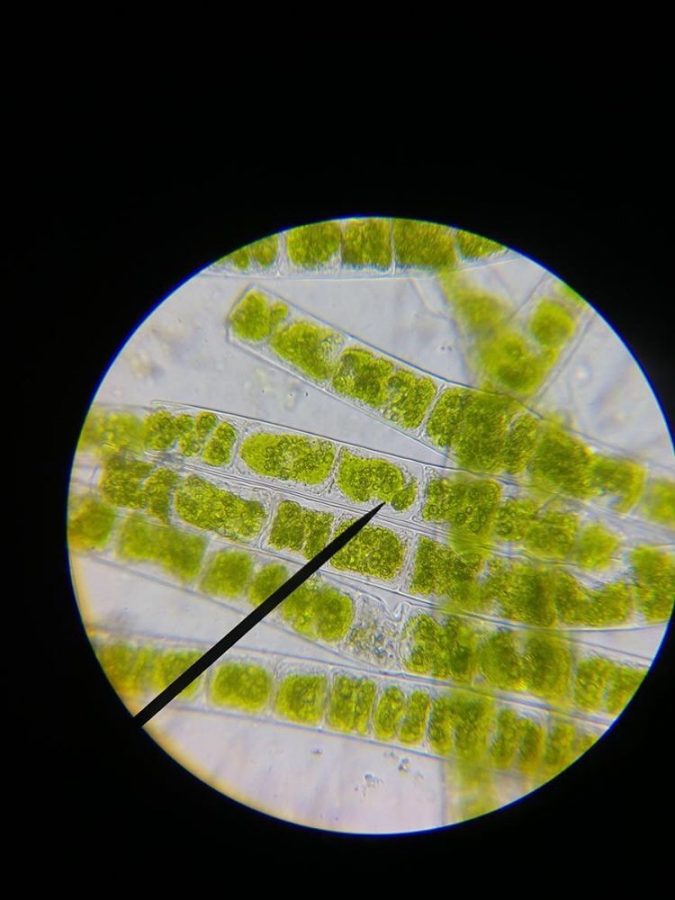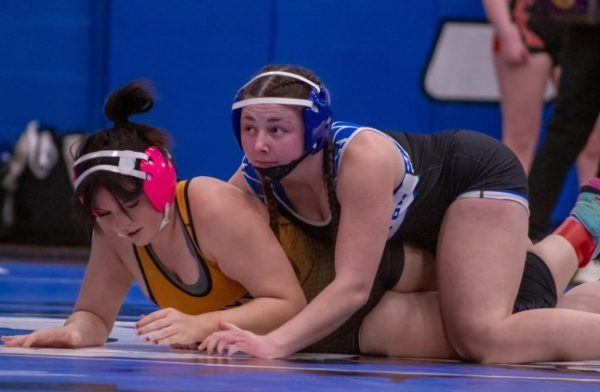Filming the microscopic world
Sarah Simons shares love of biology with Instagram videos
Microspora algae is viewed at 400x through a microscope.
Curious about the organisms all around us, senior Sarah Simons began using her microscope to view and film them up close. She’s shared her interest in biology with peers by posting the videos on Instagram this spring.
“I started around early March, though spring break gave me a lot of time to really get into it,” Simons said. “I’ve looked at fruits, vegetables, leaves, flowers, tree bark, tons of aquatic microorganisms like algae and tardigrades, miscellaneous objects and even a live ant.”
Simons uses her own ideas and suggestions from others to decide what to observe. Then she collects samples from around her house and backyard and starts working with the microscope.
“Once I get a sample on a glass slide and under a cover slip, I place it on the stage,” Simons said. “I start at the lowest magnification, 40x, and find a good area to zoom in on. I change the power to 100x and even 400x if the sample is suitable for it.”
The magnification allows Simons to see activity in the samples usually hidden to us. This microscopic view often reveals surprises that make observing them even more enjoyable.
“I never really know what I’m gonna see,” Simons said. “It’s so exciting when I get a new pond sample and see all the little guys swimming around, especially if there’s something new. I was mind-blown when I saw the bdelloid rotifer and tardigrade. There’s so many more animals out there than just birds, mammals, reptiles and fish. I think it’s awesome.”
To record these observations, Simons’s phone must be a certain distance from the eyepiece and must stay in place, which can be tricky.
“I act as a human tripod for my phone because there’s this super precise alignment which allows the camera to capture the image in the microscope properly,” Simons said. “I discard most of my video clips because the slightest movement will throw off the alignment. Then I might have to manually adjust my camera’s lighting and focus settings.”
Once the samples are successfully filmed, Simons posts the videos to her Instagram stories. She has received positive feedback from her followers, and some ask her questions to learn more about the samples.
“It’s encouraging and super cool to know that other people are interested in this kind of stuff, too,” Simons said.
Simons’s own biology interest started roughly 10 years ago from watching nature documentaries. She plans to keep using her microscope and posting videos, and will study biology soon at Truman State University.
“I love biology because there’s just so much out there to learn, and it’s so accessible to study because life is everywhere,” Simons said.
As she continues to film videos, Simons welcomes any sample ideas people are interested in seeing through her microscope.
“I’m always open to suggestions from people,” Simons said. “As long as it’s physically possible and not extremely gross, then I’ll view it.”

Elizabeth Derner is a senior, and this is her first year on The Advocate staff. She is involved in orchestra, Interact, NHS, Key Club, Jr. Optimist and...





